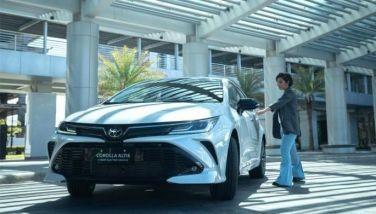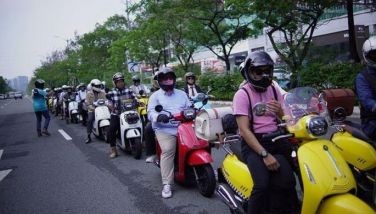Roof rack racket
MANILA, Philippines - If the increasing number of energy bar ads along the expressway is anything to go by, Filipinos have become far more active. A weekend never seems to pass without a run for a cause, a bike for a crusade and a five kilometer sponsored swim just for the hell of it. But for those who have been swept by this recent craze, you’ll know that it tends to come with a lot of extra baggage – and squeezing in your sporting gear or fitting a bike in your back seat is like inheriting 6.5% of the national annual budget with another six months of expenses still to go. It’s just not going to fit.
This is where more and more people have turned to roof racks or luggage boxes as a solution. But while there is no shortage of excellent luggage options out there, there seems to be more laws and issues surrounding their use than there are models to choose from.
Many bikers, for example, who enjoy the numerous trails down in Santa Rosa and Tagaytay, have expressed outrage at the fact that their vehicles are classified as class 2 and are forced to pay twice the toll amount simply for having a bicycle securely mounted on their roof rack.
“It’s highway robbery,” says Elbert Cuenca, a restaurant owner and avid mountain biker who frequents the trails down south. “It is as if they want to penalize us for going green,” champion biker, Ricky Montalibano of Sabak Sports adds. “Whether the bicycle is in the trunk or the roof, it does not increase our vehicle’s footprint on the highway. So why the extra charge?” Boy Simsuangco from team Yellow Cab Ellsworth points out.
The only explanation offered to drivers was that their vehicles had exceeded the 7-foot limit for class one vehicles, which automatically triggers off the sensor and registers it as a class 2 vehicle. This has led to some unpleasant confrontations at the toll booths with many refusing to pay, but usually ends when a teller would explain that because it wasn’t arbitrary, the difference would come out of their salaries.
A fair point, and one that was addressed by a very fair man once it was brought to his attention. Upon receiving our letter of concern, Ramon Borromeo, president of Skyway O&M quickly recognized the problem and admitted that there was an anomaly due to the current system’s lack of automated technology to differentiate class one vehicles carrying bicycles or luggage boxes. But he was quick to offer up a nifty solution.
Within 24 hours, Borromeo equipped each of his tellers with digital cameras. Because there is an automated accounting system that is linked to the sensors to prevent theft, those vehicles traveling with bike racks or luggage boxes that triggered off the sensors would be charged as class one, but would be photographed by the tellers to balance out any discrepancies at the end of each shift. A slightly longer way around perhaps, but equally effective in the end, and more importantly, a text book example of good old-fashioned customer service.
But sadly, this solves only half the problem. Because the SLEX is managed by two separate firms, all bets are off after the MATES managed Alabang viaduct south to Calamba and vice versa.
“The height limit is preset to 7 feet for class 1. Since sensors detect the vehicle height, load on top of vehicles such as bikes, luggage, boxes, etc. may be reported by the sensors to the toll collection system, as class 2 or 3 and charged the corresponding toll rate,” Fazly Hussein, Head of Communications for MTD group states in an email interview.
This comes in stark contrast to the earlier claim during a December 2009 press conference where we were promised a state-of-the-art toll collection system (similar, if not more advanced than the ones currently used in the NLEX and SCTEX) that uses a 3 dimensional digital curtain that can scan for weight, height and width and charge vehicles more accurately.
The concern is that it will generate more confusion at the toll gates when a vehicle is charged as class 1 going one direction and class 2 the other – although in fairness, MATES has been very flexible during their transition period and our hope is that they take the lead from Borromeo and employ a similar system while they upgrade their collection systems.
On the topic of Roof Racks, it becomes somewhat of a messy legal minefield with some provinces requiring LTO registration for it, so we thought it best to print the response verbatim, straight from the Head of Special Projects Operations and External Affairs, Ed Nepomuceno, to avoid anything going completely over our heads.
“Roof rails which are an integral part of the design of the vehicle such as in the Toyota Fortuner need not be registered with the LTO. I understand that roof racks which are placed as permanent attachments on the vehicles require LTO permit. This is because the roof racks specially when loaded changes the weight configuration of the vehicle. This is more applicable to the vehicles of traders whose top load is usually taller than the height of the vehicle. However, Bicycle roof racks which are being attached only during weekends and are being removed afterwards does not require LTO permit.”
- Latest




























